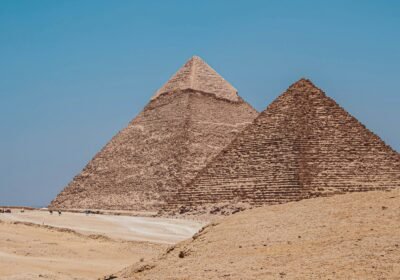Exploring Estonia: A Journey Through History, Architecture, and Culture
The Origins of Estonia: A Historical Overview
Estonia’s history is a tapestry woven from its prehistoric roots, significant cultural influences, and a succession of foreign dominations. The earliest evidence of human habitation in Estonia dates back to around 8500 BC, with archaeological findings indicating settlements of hunter-gatherers. Over the centuries, these early tribes evolved into more complex societies, leading to the emergence of the Estonian identity.
The Viking Age, from the late 8th to the 11th century, marked a crucial period in Estonia’s development. During this time, Scandinavian traders and warriors enhanced maritime trade routes and established cultural exchanges. The Vikings significantly influenced Estonian society, leaving an indelible mark on its language, customs, and social structures. Simultaneously, the Hanseatic League began to exert its influence in the region, fostering economic ties and introducing Western European cultural elements. This interaction not only laid the groundwork for economic prosperity but also shaped Estonia’s burgeoning identity.
As history progressed, Estonia faced waves of foreign domination. The Crusades in the 12th century led to the introduction of German feudal rule, which established a complex socio-political landscape. Subsequent occupations by Swedish, Polish, and Russian powers over the centuries further complicated Estonian identity but also prompted efforts toward national consciousness. Notable figures emerged during these tumultuous times, including writers like Carl Robert Jakobson, who championed the Estonian language and literature, and leaders such as Jaan Tannberg, who pushed for independence.
Fostering a sense of national identity amidst foreign rule culminated in the early 20th century when Estonia declared independence in 1918. This pivotal moment marked the beginning of a new chapter, solidifying the cultural framework that modern Estonia stands upon today. Throughout this historical journey, Estonia’s rich heritage, shaped by myriad influences and challenges, remains a vital part of its character, providing depth for visitors exploring its culture and history.
Architectural Wonders: A Reflection of Estonia’s Past
Estonia boasts a rich architectural heritage that encapsulates its tumultuous history and cultural evolution. From the medieval charm of Tallinn’s Old Town to the sprawling designs of rural palatial estates and the stark features of Soviet-era monuments, Estonia’s architecture serves as a visual chronicle of its past. The Old Town, a UNESCO World Heritage site, outstandingly reflects medieval urban design, featuring cobbled streets, gothic spires, and historical buildings that date back to the Hanseatic League. This area represents not only the architectural sophistication of its time but also the vibrancy of trade and culture in Estonia’s early history.
Moving beyond the medieval period, Estonia’s architectural narrative continues with the emergence of neoclassicism and romanticism in the 18th and 19th centuries, often observed in the grandiose manors and public buildings that emerged during this era. Notable examples include Kadriorg Palace, commissioned by Peter the Great, and the Tallin Town Hall, both indicative of the European architectural trends that permeated the region. These structures reflect the ambitions of their time while providing insight into Estonia’s evolving identity on the European stage.
The Soviet era introduced a stark contrast, characterized by utilitarian structures and monumental designs aimed at showcasing state power. The remnants of Soviet architecture serve as a poignant reminder of Estonia’s struggle for independence and identity. Important sites such as the Tallinn TV Tower illustrate this transition, combining form and function in a landscape previously marked by oppression.
Today, visitors can explore and appreciate Estonia’s architectural diversity through guided tours and immersive experiences that highlight how these structures tell the complex story of the nation. From the haunting beauty of abandoned Soviet buildings to the meticulously restored medieval sites, Estonia’s architecture invites exploration and reflection, making it a vital component of the country’s cultural impact and historical significance. Each area contributes to a broader understanding of Estonia’s journey and evolution over time.
Cultural Impact: Traditions and Modern Society
Estonia’s cultural landscape is a rich tapestry woven from its historical experiences and traditions. The essence of Estonian identity is reflected in its folk music, dance, literature, and visual arts, all of which carry significant cultural importance. Music forms an integral part of societal life in Estonia, with traditional folk songs often sung during celebrations and gatherings. The songs typically feature distinctive melodies and themes rooted in nature, love, and communal experiences, revealing the profound connection Estonians have with their environment and heritage.
Estonian folk dance is another cherished expression of cultural identity. Dances are usually performed during national festivals, where groups showcase their vibrant costumes and coordinated movements, celebrating unity and tradition. Such events not only preserve age-old customs but also educate younger generations about their historical significance, ensuring continuity in a rapidly changing world.
Literature in Estonia has flourished, fueled by the nation’s quest for identity, particularly in the face of foreign occupations. Esteemed Estonian authors like Anton Hansen Tammsaare and Jaan Kross have crafted works that capture the intricate relationship between the Estonian people and their land, often reflecting themes of resilience and national pride. Today, contemporary writers continue to explore poignant issues, bridging the gap between past and present experiences.
Visual arts also play a vital role in demonstrating Estonia’s cultural evolution. Artists draw inspiration from both traditional motifs and modern influences, showcasing their works in galleries and public spaces that invite dialogue between the old and the new. Festivals are abundant throughout the year, celebrating everything from music to literature, and they serve as platforms for artists and performers to express their cultural narratives.
As Estonia embraces modernity, it remains steadfast in preserving its rich cultural roots. The coexistence of tradition and contemporary life ensures that the vibrancy of Estonian culture continues to evolve, reflecting both the challenges and triumphs of its people.
Experiencing Estonia Today: A Cultural and Historical Destination
Estonia, a unique blend of history and modernity, offers a rich tapestry of experiences for visitors today. As travelers embark on their journey through this Baltic gem, they can explore a plethora of attractions that reflect its remarkable past and vibrant culture. Among the most noteworthy destinations is the capital city, Tallinn, where the medieval Old Town is a UNESCO World Heritage site. Visitors can wander through cobbled streets, marvel at the well-preserved Hanseatic architecture, and engage with historical narratives that shape Estonia’s identity.
Beyond Tallinn, other towns such as Tartu and Pärnu provide a glimpse into different facets of Estonian culture and architecture. In Tartu, the Estonian National Museum showcases the country’s folklore and heritage, allowing visitors to connect with the rich stories of Estonia’s past. Cultural events, including the Tartu Song Festival and various local folk celebrations, offer visitors a chance to immerse themselves in the traditions and contemporary creativity of the Estonian people.
In addition to historical attractions, Estonia is known for its vibrant festivals throughout the year, like the Tallinn Music Week and the Viljandi Folk Music Festival. These events not only highlight the nation’s artistic talent but also reinforce Estonia’s significance as a cultural hub within the Baltic region. Furthermore, guided tours in various cities provide deeper insights into key historical events and notable figures that have shaped Estonia’s narrative over the centuries.
For an authentic experience, travelers are encouraged to engage with local communities through culinary tours and craft workshops, which highlight traditional Estonian cuisine and craftsmanship. As Estonia continues to evolve, it remains a captivating destination where history and culture are inextricably linked, making it an essential stop for those seeking both adventure and cultural enrichment. This fascinating country undeniably holds importance in the contemporary context, appealing to a diverse array of travelers from all walks of life.









